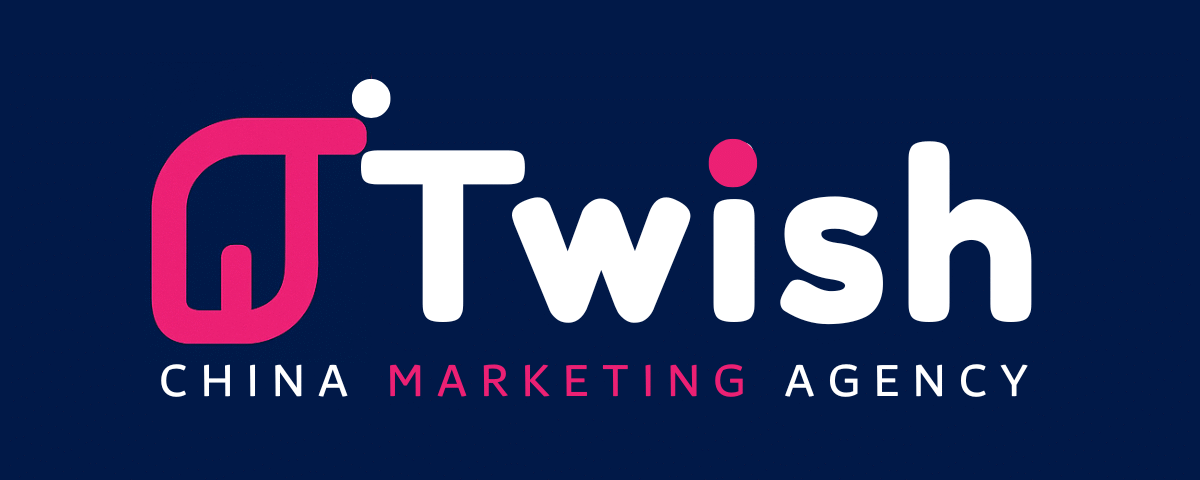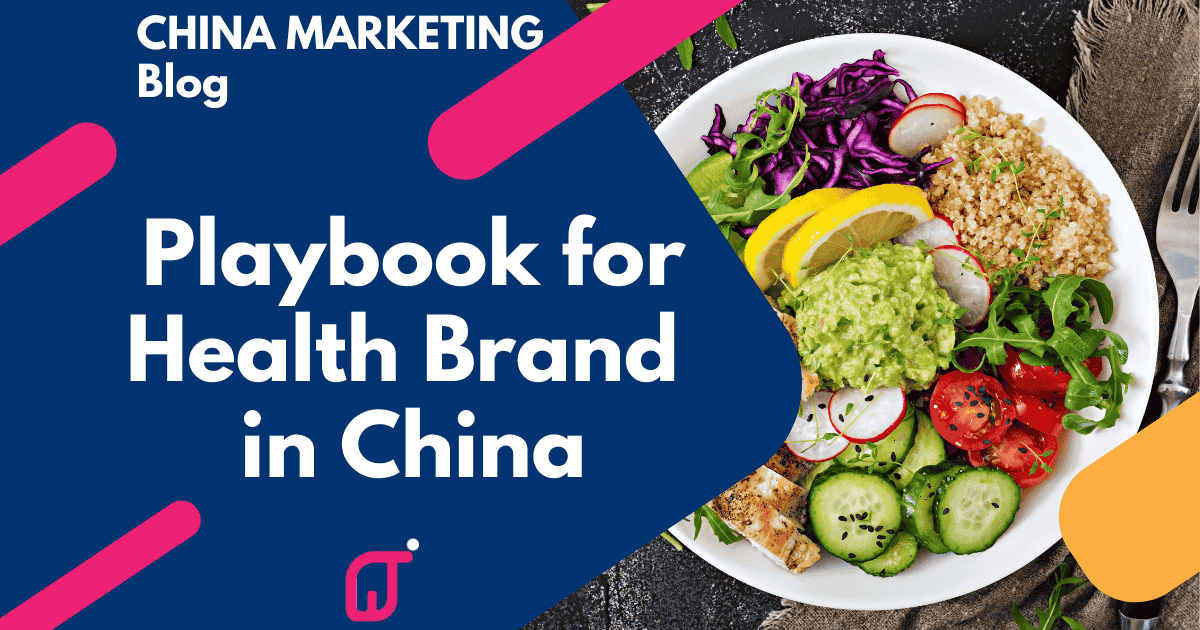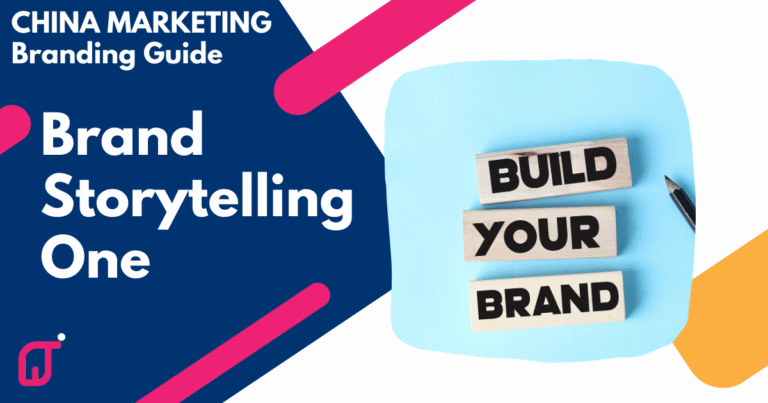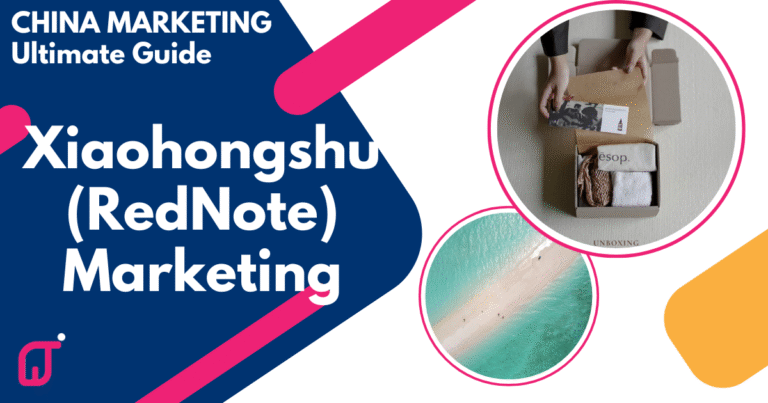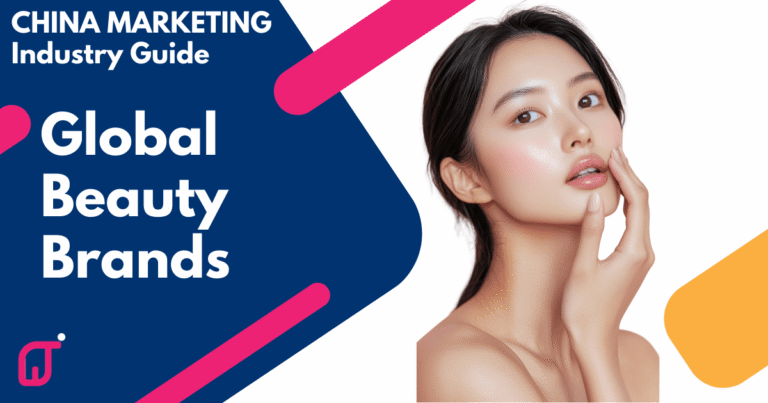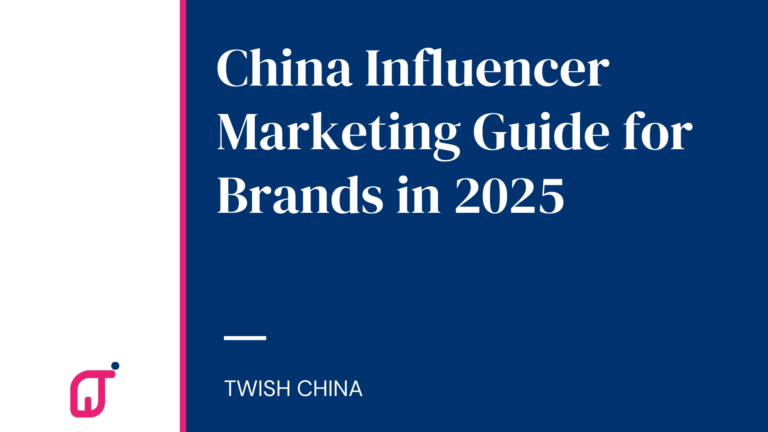The Social Playbook for Scaling a $250M Health Brand in China
Three Health Brands, Three Strategies — All Winning Big in China
In China’s health and wellness industry, weight management is arguably the category with the most potential. And within that, the ready-to-eat weight-loss meal segment has carved out a powerful niche.
We’ve seen everything from Wonderlab’s meal replacement shakes in 2017 to Ffit’s protein bars. But today, let’s look at three players that took a very different route — instead of following the meal replacement trend, they pushed the concept of ready-made meals into the spotlight:
- Dongchi – founded in August 2017
- Perfect Bowl – launched in 2022
- Sofine – founded in 2015
What these three brands share in common is remarkable: despite the brutal competition in China’s health sector, they each found their own formula for survival — and growth. All three now generate impressive annual sales, with Dongchi standing out for achieving over RMB 1.5 billion in revenue in a single year and reaching a valuation north of RMB 2 billion.
Even more interesting? Their marketing strategies on Xiaohongshu could not be more different — yet all three approaches worked!
The big takeaway here: In a hyper-competitive market, finding a strategy aligned with your brand DNA and resource strengths matters far more than blindly following trends.
Case Study: How Dongchi Scaled to RMB 2B with Data-Driven Precision on Xiaohongshu
Brand DNA: Consultancy Roots Meet Consumer Health
Founded in 2017, Dongchi entered China’s health and wellness market as an early mover. Its founder’s IBM consulting background gave the brand a strong data-driven DNA from the start.
Dongchi’s competitive advantage rests on three pillars:
- Personalised Nutrition Coaching – a dedicated team of dietitians guiding each customer.
- Supply Chain Discipline – tight cost control powered by supply chain analytics.
- Data-Led Product Iteration – constant refinement of meals and programs based on performance metrics.
This mix of consulting rigour + consumer empathy positioned Dongchi as not just another “diet food” brand, but as a structured, scalable health ecosystem.
👉Explore Twish Brand Strategy Services
Xiaohongshu Strategy Breakdown
The Power of Matrix Accounts
Dongchi’s standout play on Xiaohongshu is its matrix of “everyday user” accounts. These profiles look like authentic individuals sharing weight-loss journeys, but they’re part of a carefully orchestrated brand content ecosystem.
Tactics included:
- Persona building: portraying relatable “weight-loss heroes” — e.g., documenting a transformation from 160 lbs to 120 lbs.
- Content strategy: mixing unboxing of Dongchi’s 21-day meal program with emotional stories about the mental ups and downs of dieting.
- Content positioning: focusing on self-discipline, light meals, body transformation, and the emotional confidence gained from eating meals that were both slimming and tasty.
This approach made the brand feel grassroots and community-led, while actually being highly engineered.
Strategic Keyword Domination
Dongchi didn’t just rely on the crowded keyword “weight-loss meals” (a red-ocean term). Instead, it built a layered keyword ecosystem:
- Brand hashtags: #Dongchi #Dongchi3DayMeal #Dongchi21DayMeal #DongchiReview #DongchiCheckIn → Over 450 million views attached to brand hashtags.
- Scenario-based hashtags:
- #OfficeWeightLossMeals → targeting career women.
- #LargeScaleWeightLoss → focusing on users with BMI > 28.
- Noticeably absent: #SmallScaleWeightLoss — a deliberate choice to stay hyper-focused on high-need users, who in turn pulled general users into the funnel.
This keyword orchestration drove Dongchi’s organic search share far beyond competitors, ensuring discovery was not just broad but intent-rich. Dongchi leverages the power of UGC marketing also, and builds lots of KOCs.
👉 Case Study on Brand SEO for Xiaohongshu
Campaign Marketing: From Training Camps to Word-of-Mouth
Dongchi’s flagship marketing campaign: weight-loss training camps.
- Recruited high-BMI users for 21-day programs.
- Guaranteed results: if participants didn’t lose weight, they received a 30% refund.
- The outcome: users became fiercely loyal advocates, recommending Dongchi to their personal networks.
Today, according to public reports:
- Non-weight-loss customers account for 20% of their base (proof of spillover appeal).
- Private traffic drives 70% of sales (WeChat groups, referrals, and retention loops).
This model turned “customers” into community-driven distributors.
Data-Driven Content Optimisation
Dongchi applies consulting-level analytics to creative decisions:
- Analysing user interaction data to identify high-conversion content formats.
- Scaling up winning posts for replication.
- Leveraging hot search terms and celebrity references to amplify exposure (“borrowed influence”).
Results & Marketing Playbook
- Accounts: 5 brand-owned / matrix accounts
- Content published: 3,229 notes
- Followers: 55K+
- Engagement: 210K+ interactions
- Channel mix: 95% driven by brand-owned notes & livestreams, with KOL support as a secondary lever
Playbook Summary
- Primary driver: Branded notes & matrix content
- Secondary driver: Live commerce
- Tertiary support: KOL collaborations
👉 View All Twish Services for Xiaohongshu Growth
Key Takeaway
Dongchi’s success wasn’t about chasing fads. It was about:
- Owning a unique content ecosystem (matrix accounts)
- Controlling keyword real estate strategically
- Building loyalty through high-trust programs (refund-backed camps)
- Scaling creativity with data
For Western brands eyeing China, Dongchi proves that clarity of strategy beats sheer budget.
Case Study: Perfect Bowl — Building a Health Brand Through Founder IP
Brand DNA: An International Founder with Built-In Storytelling
Launched in 2022, Perfect Bowl is a fresh entrant in China’s health and wellness market — but it didn’t arrive quietly. Founded by an Argentinian entrepreneur who is also a Tsinghua Schwarzman Scholar, the brand had international DNA from day one.
This background shaped both its product strategy and its marketing approach:
- Product differentiation: Instead of the usual Chinese-style light meals, Perfect Bowl offers Western-inspired healthy options like salmon and pasta.
- Founder as IP: The founder’s unique profile as a “scholar entrepreneur” gave the brand immediate credibility and a compelling personal story, tailor-made for Xiaohongshu’s content-driven ecosystem.
Founder as the Face of the Brand
Perfect Bowl doubled down on personal branding. The founder’s personal account became a powerful vehicle to build trust and relatability.
Key tactics included:
- Professional persona: positioning as both a health & lifestyle expert and a start-up founder.
- International flair: sharing life in China, feedback from international friends trying the meals, and glimpses of life back in Argentina.
- Content themes: entrepreneurship stories, product R&D philosophy, and healthy living routines.
- Engagement strategy: livestream Q&As, direct responses to user questions, behind-the-scenes of finding factories or developing new products.
The result? Users felt like they were co-creating the brand journey with the founder.
Mid-Tier KOL Matrix
Unlike brands that burn budgets on top celebrities, Perfect Bowl took a smarter route: collaborating with a wide network of mid-tier influencers (fitness coaches, food bloggers, lifestyle creators).
- Selection criteria: alignment between audience profile and Perfect Bowl’s target customer. Not limited to food or fitness, but extending into lifestyle and fashion niches.
- Activation model: livestreaming sessions where products were broken down in detail, complete with giveaways and authentic feedback — rather than standard ad placements.
This created a multi-angle brand presence, credible across multiple content verticals.
👉 Case Study on KOL Collaborations in China
Cross-Industry Collaborations
Perfect Bowl also extended its reach beyond Xiaohongshu through cross-industry partnerships:
- Fitness partnerships: teamed up with popular gym chain Z&B in central Shanghai, offering in-gym tastings, banners, and joint memberships.
- Community building: built Xiaohongshu groups for users, ensuring continuous service, feedback, and brand engagement.
This dual play of offline exposure + online community created a full-circle ecosystem of touchpoints.
Results & Marketing Playbook
- Accounts: 1 brand account + 1 founder account
- Notes published: 270+
- Followers: 5.6K
- Engagement: 10K+ interactions
- Channel mix: Primarily livestreams + mid-tier influencer collaborations
Playbook Summary
- Primary driver: Founder IP content
- Secondary driver: Mid-tier influencer livestreams
- Tertiary support: Cross-industry offline activations + community groups
👉 View All Twish Services for KOL & Community Marketing
Key Takeaway
Perfect Bowl proves that personal branding (IP化) can be a brand’s strongest asset. In a competitive market, where most brands sound alike, a founder with a credible story becomes a living differentiator.
Combined with mid-tier KOL collaborations and smart offline tie-ins, Perfect Bowl created a nimble yet scalable growth path — one that international brands can replicate if they’re willing to put authenticity at the centre of their China strategy.
Case Study: Sofine — Combining Traditional Supply Chain Strength with Paid Traffic Power
Brand DNA: Supply Chain Advantage Meets Digital Gaps
Founded in 2015, Sofine started as an importer of frozen goods, giving it a unique edge in supply chain resources. This ensured strong product quality and access to premium raw materials.
But its trading background also revealed clear weaknesses:
- Limited expertise in product design and packaging
- Weaker user experience and customer service focus
- Lack of strong brand identity
To compensate, Sofine adopted a “buying traffic” growth model — pouring resources into influencer collaborations and advertising, while relying on its supply chain to guarantee product quality.
👉 Explore Twish Paid Media & KOL Strategy Services
Xiaohongshu Strategy Breakdown
1. Top KOLs + Celebrity Endorsements
Among the three players, Sofine takes the most luxury-driven approach. Its campaigns feature celebrities such as Annie Yi (伊能静) and Zhang Jingchu (张静初).
The logic is straightforward: whether or not you’re my core customer, you’ll know my brand exists.
Key tactics included:
- Celebrity selection: choosing stars already known for promoting healthy lifestyles, ensuring brand fit.
- Content strategy: heavily emphasising “high quality” and “imported” positioning.
- Traffic logic: leveraging celebrity influence to rapidly build brand awareness, regardless of short-term conversion.
2. Mid-Tier Livestreaming as the Conversion Engine
Unlike Dongchi or Perfect Bowl, Sofine is heavily dependent on livestream e-commerce as its core growth driver.
- Wide KOC activation: building grassroots momentum through smaller creators.
- Daily livestreaming: brand-owned accounts running long sessions to capture steady sales.
- Event spikes: pairing celebrity-driven livestreams with major promotions.
- Performance mix:
- 42% mid-tier influencers (the backbone of conversions)
- 37% junior influencers (cost-efficient)
- 10% everyday users (for authenticity)
- 5% top-tier KOLs (for visibility)
- 3% celebrities (for brand endorsement)
This careful balance ensured both scalability and credibility, turning livestreaming into Sofine’s primary revenue channel.
3. Paid Advertising (聚光投放)
For Sofine, advertising isn’t optional — in such a competitive segment, not running ads means almost no organic reach.
- Targeting: precise user profiling for ad audiences.
- Creative strategy: lifestyle-driven imagery, projecting a refined and healthy lifestyle.
- Limitations: while functional, Sofine’s ad creative has not stood out compared to aggressive competitors like Nutribite (维小饭).
Still, ads played a necessary supporting role, amplifying influencer campaigns and keeping the brand visible in a crowded marketplace.
Results & Marketing Playbook
- Accounts: 3 brand-related accounts
- Notes published: 2,000+
- Followers: 37K+
- Engagement: 360K+ total interactions
- Channel mix: Primarily livestreams + influencer traffic, with paid ads as a secondary layer
Playbook Summary
- Primary driver: Livestream commerce
- Secondary driver: Celebrity & top KOL endorsements
- Supporting role: Paid ads (聚光投放)
Key Takeaway
Sofine shows how traditional advantages (supply chain strength) can be leveraged in a digital-first market, even if the brand DNA isn’t inherently “consumer marketing-friendly.”
By spending aggressively on livestreaming and celebrity endorsements, Sofine built fast awareness and captured market share. While its creative execution may not be the most innovative, the combination of traffic buying + product quality assurance delivered results at scale.
For overseas brands, Sofine’s path is a reminder that:
- Strong operational resources can offset weaker branding — if paired with smart paid media.
- In Xiaohongshu’s ecosystem, livestreaming is not just optional, but often the conversion backbone.
- Even in crowded categories, well-funded paid campaigns can carve out defensible space.
In-Depth Comparison of the Three Growth Models
1. Brand DNA & Core Advantage Comparison
| Dimension | Dongchi | Perfect Bowl | Sofine |
| Founder Background | IBMConsulting,Supply chainAnalyticsExpertise | Argentine, with an internationalization perspective | Transformation of Traditional Trading Companies |
| Product Features | Chinese-style light meals designed according to regions, formulated by nutritionists, with hundreds of SKUs, and dishes developed by foreign head chefs | Western-style light meals (salmon,pasta, etc.) | Imported frozen foods starting with berries, and meals such as rice balls and fried rice |
| Core Competence | NutritionistTeam + Datadrive | Internationalization Product +FounderIP | Supply chainresource |
| Service Model | NutritionConsultationService | Community Interaction | Standardized Product Sales |
2. Resource Input Model
| Dimension | Dongchi | Perfect Bowl | Sofine |
| Ongoing cost | Lower | Medium | High |
| manpower | High (Nutritionists) | Medium | Low |
| R&D | Strong (Nutritionists) | Strong | Weak |
Which Strategy Fits Your Brand? Matching Growth Models to Brand DNA
Not every brand should play the same game. Here’s a breakdown of which type of brand is best suited for each of the three winning strategies:
Dongchi’s Model Works Best For:
- Brands with in-house expert teams like dietitians or health coaches
- Founders with data analytics or operations backgrounds
- Products that have diverse usage scenarios and trigger personalised needs and UGC
- Teams committed to long-term brand building and maximising LTV
Ideal for: 🔹 Growth-stage health brands 🔹 Businesses investing in deep content ecosystems 🔹 Companies focused on sustainable community building
Perfect Bowl’s Model Works Best For:
- Founders with international or high-credibility backgrounds
- Products with clear differentiation (e.g., Western meals vs. Chinese-style)
- Brands with a youthful tone, appealing to early adopters
- Founders who can personally invest time into community and IP-building
Ideal for: 🔹 Early-stage startups 🔹 DTC lifestyle or health brands 🔹 Founders looking to use themselves as the brand’s face
Sofine’s Model Works Best For:
- Companies with strong supply chain capabilities
- Brands with robust cash flow able to support high marketing spend
- Products that are operationally solid but lack branding finesse
- Businesses aiming for rapid scale and less focus on service
Ideal for: 🔹 Mature brands transitioning to DTC 🔹 Offline manufacturers entering digital commerce 🔹 Businesses seeking to dominate via paid acquisition
👉 Twish Performance Marketing & Paid Ads Services
Platform Logic: Xiaohongshu Rewards Authenticity
Xiaohongshu is not a traditional e-commerce channel — it’s a lifestyle-driven content platform.
That’s why:
- Dongchi’s matrix of “real people” accounts felt native and gained traction
- Perfect Bowl’s founder-driven stories built credibility
- Even Sofine’s premium aesthetic worked because it aligned with aspirational lifestyles
Brands that mimic the platform’s natural content tone — storytelling, real user experiences, authentic visuals — will always outperform those who try to brute-force sales messaging.
👉 Twish China Content Localisation Services
Matching Strategy to Brand Stage
| Lifecycle Stage | Recommended Strategy |
| Startup Phase | Perfect Bowl-style founder IP + low-cost storytelling |
| Scale-Up Phase | Dongchi-style content matrix + SEO keyword architecture |
| Mature Phase | Sofine-style high-budget livestream + celebrity-backed blitz |
Winning Consumer Mindshare: Different Anchors, Same Goal
| Brand | Key Message in Consumer Mind |
| Dongchi | “It works” – credibility through thousands of real transformation stories |
| Perfect Bowl | “It’s healthy” – expert-led, science-backed, lifestyle-aligned |
| Sofine | “It’s premium” – high-quality ingredients, import-grade feel |
Each brand dominates a unique psychological anchor — that’s how they stand out in a crowded space.
Final Thoughts: Build the Brand That Suits You
What Dongchi, Perfect Bowl, and Sofine prove is simple: you don’t need to outspend or out-hype the market. You just need a strategy aligned with your own DNA.
To succeed in China’s health and wellness market — a highly competitive, high-potential space — you must:
- Know your strengths and limits
- Choose a strategy that fits your capabilities
- Commit to patient, focused execution
- Optimise continuously — don’t panic-pivot every month
This is not about finding “the best” strategy. It’s about finding the right one — for you. That’s how you build a truly unburnt-out brand in a hypercompetitive space.
